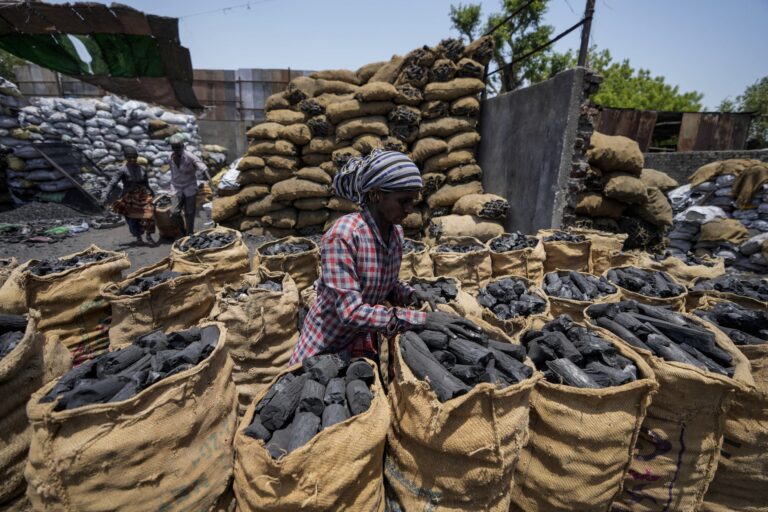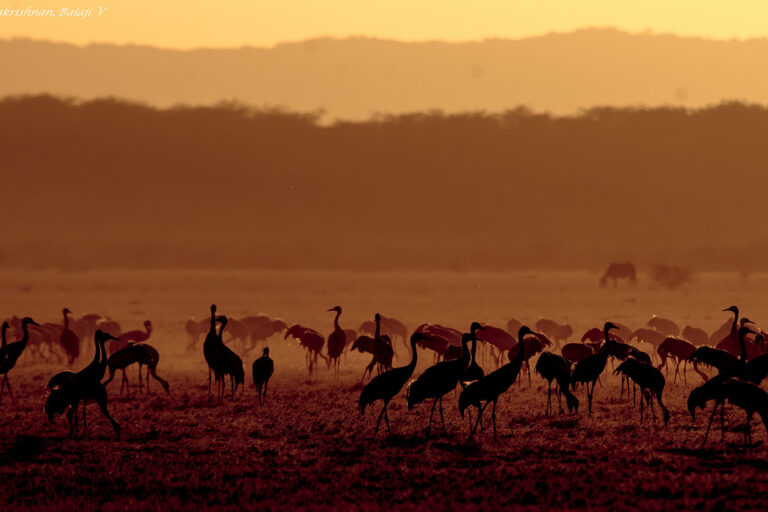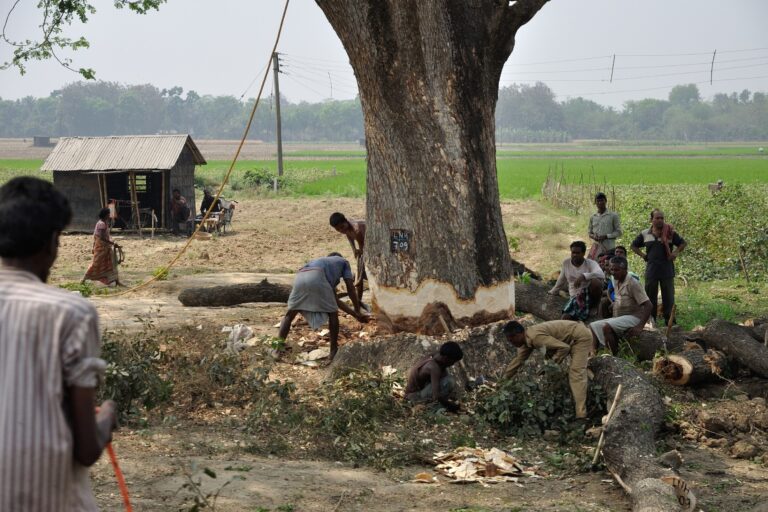- Mountain ranges globally are experiencing higher temperatures, which has made scientists scrutinise their treelines to assess for effects of climate change.
- A new study of the Trans-Himalayan region in Nepal and Hengduan Mountains in China revealed that the former is experiencing rapid shifts in treeline, with younger trees growing further up the mountains.
- Alterations in treeline elevation may disrupt the delicate balance of the hydrological cycle, affecting water availability downstream as snow and ice melt patterns change, the researchers said.
Once firm in their base camps on the lower reaches of the mountains, alpine treelines in the Himalayas and Hengduan regions are now in a slow-motion race towards the mountaintops as they respond to the warming effects of climate change.
The alpine treeline is the upper altitudinal limit of tree growth toward the top of mountains, making a transitional zone from forests to treeless alpine vegetation. Since these are zones where the canopy of forests is less, the trees, as well as under-canopy species, are exposed to relatively harsher environmental conditions, which makes growth and survival difficult. It is here that most dynamic changes occur. Studies show that in the Himalayan region, temperatures are rising more than the global average, with fewer cold days and more warm days, making ecosystems there vulnerable to climate change.
These mountain environments, characterised by low temperatures at higher elevations, create limitations on tree growth. However, the intricate interplay between temperature and water availability, driven by precipitation gradients, means that predicting treeline shifts based solely on temperature changes is overly simplistic and may not fully reflect the complex reality.
To assess how climate factors affect radial growth and spatiotemporal dynamics of different species across the timberline and treeline of the Trans-Himalayan region (Nepal) and Hengduan mountains of China, a research study was published in the Regional Environmental Change journal in November 2023.
The findings of the study showed that “the treeline is moisture-sensitive in the Himalayas” and sensitive to temperature as well as moisture in the Hengduan region. “There was abundant seedling recruitment with consistent range shift of Abies spectabilis and Betula utilis treelines in Nepal and lower seedling recruitment with lower shifting rates of treelines of Abies georgei and Larix potaninii in the Hengduan Mountains,” the study said.

Achyut Tiwari, the lead author, said the tree species selected occupy different elevations in the alpine treeline. “The treelines in various regions are composed of individual trees that make up the uppermost vegetation zone. However, these treelines exhibit differences influenced by factors such as topography, temperature, and other site-specific elements. We selected four treeline species from these regions, two evergreen: Abies spectabilis and Abies georgei, and two deciduous: Betula utilis and Larix potaninii. A. spectabilis (Himalayan fir) usually grows under moist climatic conditions in sub-alpine Himalaya forests (3000 to 4000 m asl), occasionally extending its upper limit to 4300 m asl. Betula utilis (Himalayan birch) dominates an extensive area of subalpine and alpine forests up to 4500 m elevation, quite close to glaciers on the northern slopes of the inner Himalayas,” he said.
Abies georgei is a common tree species up to 30 m tall and found in subalpine dark coniferous forests on the southeast of Qinghai-Tibet Plateau, growing mostly as alpine-subalpine coniferous forests at 2500–4200 m. Whereas, Larix potaninii (Chinese larch) is usually found in mountains and river basins from 2500 to 4600m asl. “Growing up to 50 m tall, this is one of the earliest species used in dendroclimatic studies in China and is highly sensitive to environmental variations, exhibiting tremendous potential for usage in dendroclimatology,” he added.

Mountain treelines are rising globally. A study conducted by scientists from the Southern University of Science and Technology in Shenzhen, China, used remote sensing to map the highest points of patches of tree coverage across 243 global mountain regions and found that 70 percent of mountain treelines had moved uphill between 2000 and 2010. On average, treelines moved upwards by 1.2 metres (4ft) a year, but the shift was greatest in tropical regions, with an average increase in elevation of 3.1 metres a year – and in all regions they found the rate of change was accelerating.
Amit Chawla, Principal Scientist at the CSIR – Institute of Himalayan Bioresource Technology (IHBT), Palampur, Himachal Pradesh, who is not associated with the study, told Mongabay-India that Tiwari and his co-authors have justified presenting evidence of major treeline species being affected by the changing climatic conditions in the Himalaya as well as in Hengduan mountains. “Their conclusion that the growth responses of treeline species in the Himalayas are moisture-sensitive is something of much importance as it reinforces that the precipitation is a key factor along with temperature in determining the treeline distribution and its spread,” he said.

Understanding treeline dynamics
Various regions in the mountain ecosystems exhibit distinct climates, each unique to its specific site. However, accessing information about the environment from over 200 years ago is challenging. This is where counting tree rings came in.
Tiwari explained that dendrochronology serves two primary purposes: determining the exact age of trees and exploring the correlation between climatic factors and tree growth.
“First, it determines the age of trees, revealing whether the treeline is static or shifting. For instance, the presence of mature trees aged 200 to 300 years at the upper boundary suggests a static treeline. In contrast, a moving treeline is indicated by younger trees at higher elevations. Dendrochronology achieves this by precisely dating trees through the annual rings formed, allowing researchers to identify emerging species and assess the movement of treelines,” he said.
In addition to age determination, dendrochronology also involves collecting climate data from the study area. “Correlating this climate data with annual tree ring width (e.g., 1 millimetre, 1.5 millimetres, 2 millimetres) allows us to analyse the relationship. Through correlation studies, we can identify which climatic factors are limiting tree growth. For instance, in regions with very low rainfall, trees in high mountain systems may exhibit smaller rings. This correlation is established by comparing the ring width data for each tree with the climatic data from nearby stations,” Tiwari added.

However, treeline shifting can’t be attributed to climate change alone. Microbes also play a crucial role in supporting the growth of alpine tree species. Even with rising temperatures and precipitation changes, the availability of biotic conditions like microbes, fungi, and symbiotes facilitating hydrogen acquisition and seed growth has an important role for these trees. The shift in treeline upwards raises questions about the availability of the biotic environment and microbes.
“Specifically in the Himalayan region, this crucial data is lacking. The availability of shade, essential for tree growth, is also uncertain. Hence treeline study is highly complex. We need to study from permanent plots for a long period of time to really check the driving factors for the treeline,” Irfan Rashid, an assistant professor at the Department of Botany, University of Kashmir, said.
Consequences of shifting treelines
The shifting of treelines in the Himalayas, driven by climate change, holds multifaceted consequences for the mountain ecosystems.
“Habitat displacement and loss become apparent as treelines move upward, impacting plant and animal species adapted to specific elevations and potentially leading to local extinctions,” Gaurav Zinta, a senior scientist at CSIR- Institute of Himalayan Bioresource Technology, Himachal Pradesh, said. “The intricate relationships between flora and fauna face disruption, as species reliant on particular tree cover for sustenance and shelter grapple with the changing landscape. Biodiversity patterns may shift, with some species thriving in new conditions while others decline.”

The non-vascular plants such as bryophytes and lichens occurring beyond the treeline in the open may especially be at risk from sub-alpine forest trees’ upward advancement. They might face increased competition for light and other resources where increased temperatures result in enhanced plant growth and the establishment of more competitive species from lower elevations, according to Chawla. “Further, forest development at hitherto open alpine areas also modifies edaphic factors such as nutrient content, pH, and soil moisture, again affecting the composition and abundance of understorey herbaceous species communities. The new tree establishment associated modifications in environmental conditions may, therefore, substantially modify plant communities,” he said.
Since the growth of sub-alpine forests in grasslands will enhance the capacity of soil to absorb and retain water, thus treeline advance into formerly treeless and open areas has the potential to considerably affect downslope hydrology. “This may result in stream flow decrease and might cause a decreased runoff downstream This might be of more concern at locations where the availability of water is already scarce,” Chawla said.
Watch: [Video] Hydropower in the Himalayas and disaster risks
Conservation measures for shifting treelines
Experts say that it is important to understand that the factors responsible for climate change originate elsewhere, yet their implications manifest in the Himalayas. “It is imperative to address the research gap concerning whether the treeline is genuinely shifting. Current data is scarce, especially in the Himalayas, where studies relying on outdated toposheets lack precision when compared to more accurate remote sensing data. The reliability of such comparisons is questionable. Closing these knowledge gaps is crucial for informed decision-making and understanding the dynamics of treeline shifts,” Rashid said.

Further, addressing the shifting alpine treelines in the Himalayas requires a comprehensive conservation approach. Conservation practices include preserving habitat connectivity and undertaking reforestation and habitat restoration projects. “Moreover, effective water resource management, community engagement, and livelihood diversification are also crucial aspects. Ongoing research, monitoring, and adaptive management strategies are necessary to track treeline shifts, biodiversity changes, and ecosystem dynamics. International collaboration is key for addressing transboundary conservation challenges, while robust policies and legislation support conservation goals. Additionally, education and awareness efforts play a pivotal role in informing local communities, policymakers, and the public about the significance of mountain ecosystems,” Zinta said.
Chawla added that careful studies may be undertaken to generate baseline datasets about the populations of different plant species and subsequently monitor over the years. “We have been conducting Long Term Ecological Research Programme on treelines of Western Himalaya which are mostly dominated by Betula utilis and Pinus wallichiana. The treelines are not located in isolation and forms a transition zone from sub-alpine and temperate forests below and the vast alpine areas above. So, these ecotonal areas should not be studied in isolation and we need to know the distribution of plant species in the adjacent eco-regions as well,” he said.
Read more: Alpine plants may alter height or leaf size to cope with early snow-melt conditions
Banner image: The Himalayas are experiencing rapid shifts in their climate. Photo by Achyut Tiwari.














